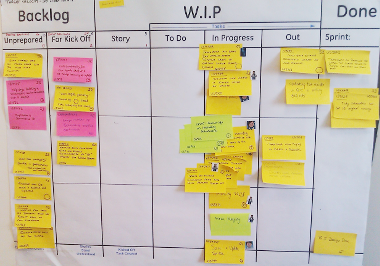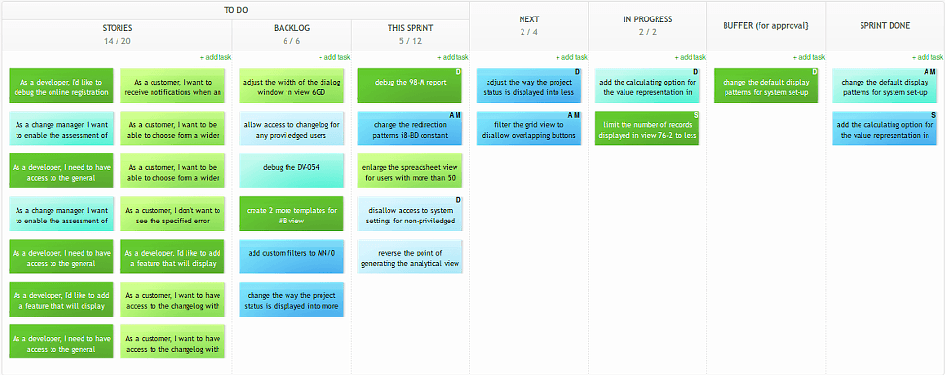The general view is, that Scrum is the best Agile method for building a product and development projects. But when it comes to projects that include production and product support you will be advised to turn to Kanban. This provides some idea of what Scrumban might be. It's a solution favored by the service industry, great project management tool for teams that deal with product development and its maintenance together.
Scrum: small teams, small steps, short iterations

The idea of Scrum is dividing the team into smaller groups, splitting the time at the team's disposal into sprints and segmenting the workload into tasks of a doable size, ordered by their difficulty level. The feedback after each sprint is the source of alterations to the grand scheme for the product. A daily stand-up Scrum meeting is its another characteristic. Each team member answers 3 quesions: what I've lately acomplished, what I'll do today, what impediments are there?
Kanban: visualize workflow and limit WIP
The spine of Kanban is built of a visualization of workflow, limiting work in progress and gaining feedback from analyzing the Lead and Cycle Time chart. The chart compares the total time a task has spent on the board with the time it actually took to work on it. Information provided by Lead and Cycle Time chart allows to optimize the process and strive for a short lead time.
Apply Scrumban
The way to pull off Scrumban is by applying Kanban principles into your Scrum process. So, limit work in progress - not only in the doing type of column, and that itself will make for a higher productivity. If you allow the backlog to only take one iteration's worth of tasks, you will ensure that the team is working effectively. Take from the Lead and Cycle Time and adjust your expectations to the reality of your team's performance. Alternatively - pin-point the member, that's slowing you down.
Benefits of using best of both
Having insightful analytics providing you feedback makes for continuous improvement and for shorter lead time. By limiting Work in Progress you improve the overall quality. Thanks to constant ability to follow progress on the Scrum board, you allow for all information to be accessible at all times. By using both Kanban and Scrum you are making the amount of waste (actions that don't provide value to the client) smaller - as service tasks are accounted for in Scrumban, as oppose to Scrum. You can read more about successful transitions from Scrum to Scrumban in this paper.
Scrumban in practice with Kanban Tool
- use an information radiator (Kanban Cast) and carry on with daily stand-ups
- limit the size of the backlog (apply WIP limits in Board Editor)
- stay serious about the WIP limits
- do reviews - with regards to the current sprint and with regards to the general process - utilize Kanban Tool's insightful Analytics, especially the Lead and Cycle Time chart to measure the speed of the process
- don't assign tasks, let each team member to choose his/hers own favorite job (use the Auto Assign Power Up)
- make good use of Card Block to pause problematic tasks until the next review and use Time Tracking to create a Time Report of great value to the whole team.


